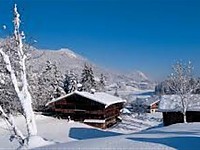
Last winter season, Tirol’s tourism industry experienced an increase in arrivals and overnight stays. Between November of 2014 and April of 2015, roughly 5.6 million guest arrivals were recorded in the Austrian state. This corresponds to an increase of 4 percent. According to Tirol Werbung, overnight stays increased by 2.1 to a total of nearly 25.9 million.
According to the tourism marketing association, the main reason for this positive development was a “significant plus” on the German market. German tourists, whose numbers increased by 4.4 percent, were the reason for almost every other winter overnight stay in Tirol.
But they were not the only ones, as tourism from the Netherlands (arrivals + 2.7 percent, overnight stays + 1.9 percent), Switzerland (arrivals + 7 percent, overnight stays + 5.3 percent) and the United Kingdom (arrivals + 3.8 percent, overnight stays + 3 percent) also facilitated growth. When it comes to overnight stays, the market for domestic tourism stayed „stable“ – tourist arrivals recorded + 2.9 percent.
As predicted, there was “an obvious decrease” in Russian tourism. The final winter results displayed a decrease of 35 percent in arrivals and 34.7 percent in overnight stays. This places Russia right behind Poland and the Czech Republic – who both experienced increases compared to the previous season – as Austria’s most important East and central European market when it comes to arrivals and overnight stays.
Measured by overnight stays, holiday rentals proved to be the favorite: Private Holiday homes recorded increases of 3.8 percent, while commercial rentals were 3.7 percent higher than before. Even 4 and 5-star hotels were able to increase their overnight stays by three percent. However, private vacation rooms experienced a decrease of 2.1 percent. Furthermore, Tirol Werbung assessed a further decrease in stay time from 4.8 to 4.7 days on average, which proves the previously recorded trend of shorter stays.










